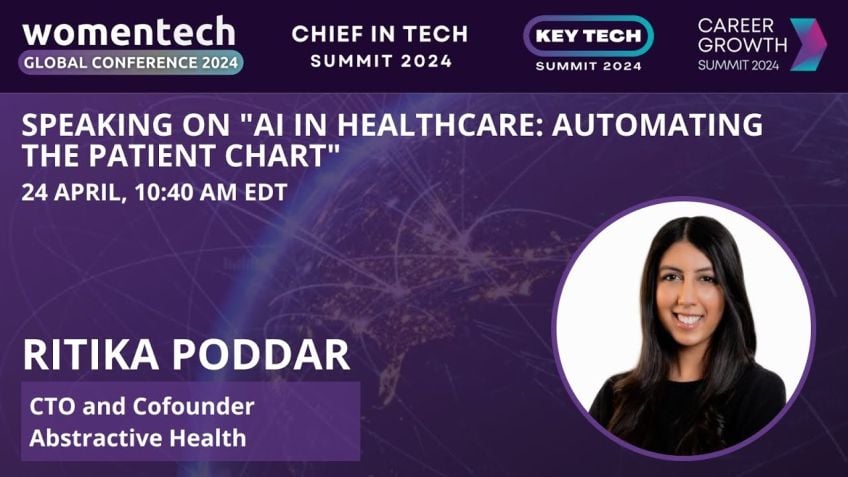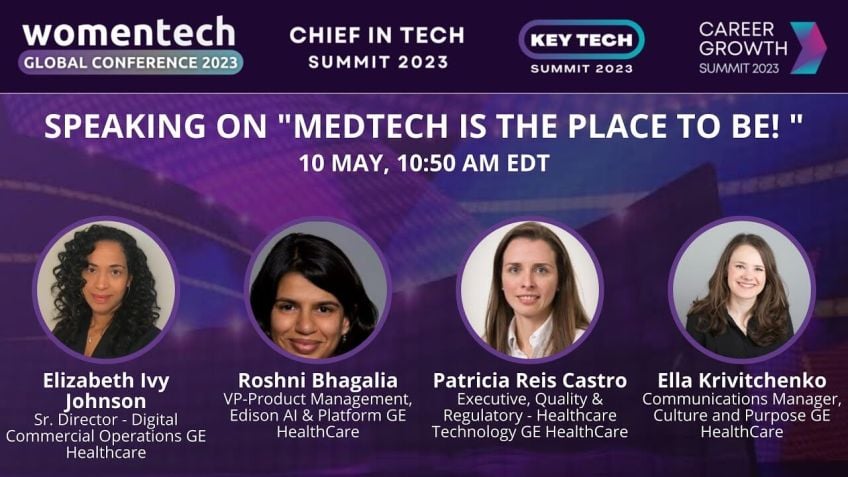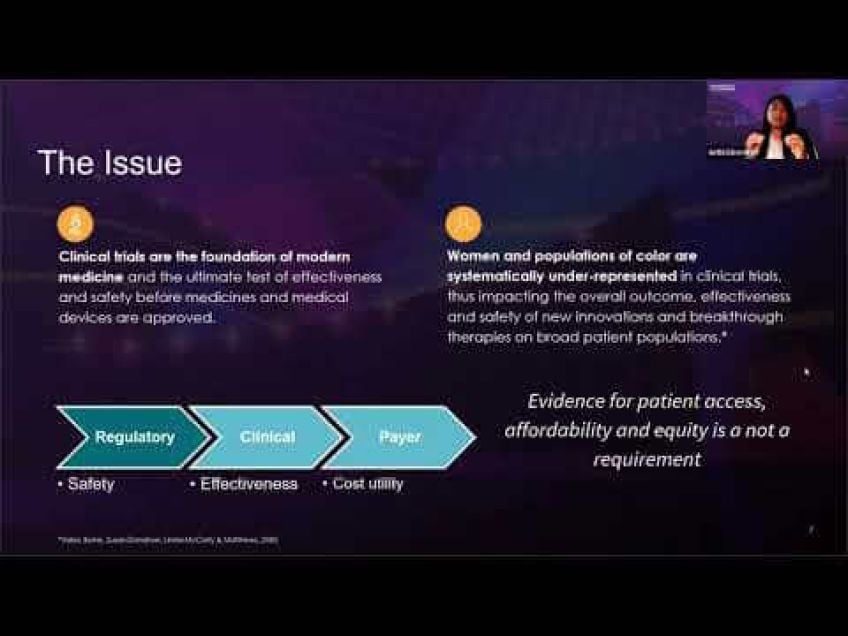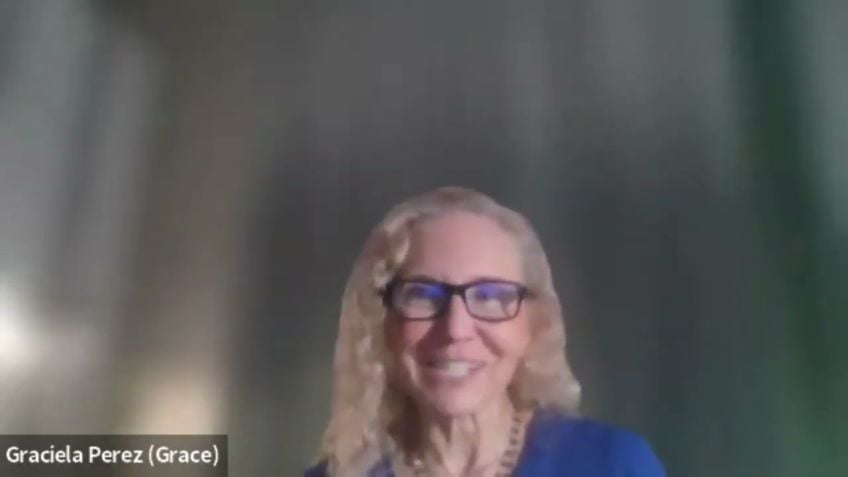Leveraging Data and Technology to Bring Efficiency to Healthcare
Transforming Access to Quality Healthcare: Carbon Health's Vision
Hello, my name is Claire Hoff, the Chief Technology Officer of Carbon Health. Our company, founded in 2016 by the education innovator Aaron Bali aims to make high quality healthcare more accessible and equitable for everyone. Allow me to take you through our journey and the innovative technology systems that fuel our mission.
Responding to the Pandemic: Carbon Health's Role
When COVID-19 hit, we had just six clinics across the U.S. However, unphased by our size, we decided to serve all communities hit by COVID. We generated a nationwide index of all COVID-19 testing sites, becoming the top resource when searching for "COVID testing near me" on Google. Upholding our mission of accessible care, we also established additional pop-up clinics in areas lacking adequate healthcare clinics.
Our response to COVID-19 didn't stop there. We assisted numerous businesses, government agencies, and schools in safely reopening by providing on-site COVID-19 tests. As the pandemic worsened in Los Angeles, we partnered with the City of L.A to launch a vaccination site at Dodger Stadium. This was possible due to our scalable provider application and patient application, which allowed us to start with 6000 appointments and later increase to 6000 appointments across seven different sites.
Building an All-Inclusive Healthcare Tech Stack at Carbon Health
We are reimagining healthcare by integrating technology throughout the entire process. Our patients can access us through virtual care, our clinics, pop-up sites, or receive on-site care for employers' services. Furthermore, we have our proprietary provider app, similar to other electronic medical systems, and an easily accessible patient app that serves as a platform for coordinating appointments and information sharing.
Patients can make appointments, detail their health concerns, and even answer pertinent questions that save time during their visit. Post-appointment, our interactive app supports automated follow-ups using chatbots, reviews of lab results and care plans, and querying via the app.
Optimizing the Provider’s Experience
Our provider app helps doctors navigate the workflow of providing care, ensuring they have ready access to patients’ histories and immediate information inputs. It boasts an optimized work process that curtails the hours doctors spend charting patient information after work hours.
Launching Home-Based Care Programs
We have also rolled out several home-based care programs such as our Diabetes program and Hypertension care. Our Diabetes program utilizes CGM monitors to help patients monitor their blood glucose levels and log their exercise and food intake, which has significantly improved glucose levels for most patients.
Providing Access to Quality Healthcare
At Carbon Health, we are committed to providing unrivaled access to quality healthcare. Our collaborations with numerous healthcare systems through Carbon Health Connect allow quicker appointment scheduling with specialists. Our technological input ensures the coordination of all this care, along with data collection that informs the kind of programs to offer and how to better serve our patients.
Our Vision: A Blueprint for an Optimized Healthcare Future
We at Carbon Health, are using technology to create a more accessible, quality, and equitable healthcare system, which we believe is the future of healthcare. The application of AI and data science not only helps us evolve diagnostics but also to identify trends and potentially manage outbreaks. We hope other healthcare providers will leverage our learnings to improve the healthcare industry on the whole.
Conclusion
In conclusion, Carbon Health is committed to revolutionizing healthcare access and quality through innovative technology. Our mission remains to build a healthcare system that is high-quality, accessible, and equitable for all, and every step we take is designed to make this vision a reality.
Video Transcription
My name is Claire Hoff. Um I'm I'm the Chief Technology Officer of Carbon Health. Um I've been with Carbon Health for about 18 months. Uh Carbon Health was founded in 2016 by Aaron Bali.Aaron Bali was also founder of Udemy Elearning marketplace where they are serving 50 million uh plus studentss around the globe. And Udemy S mission was to make education accessible to those who wanted to learn. And um having been a founder of Udemy Aaron decided to move on and uh try to make health care more accessible because as he looked at us healthcare system, us healthcare system is not high quality nor is it equitable? As uh many of you have seen during the pandemic, underserved communities were more impacted by the pandemic. And uh many, many people in those communities were unable to get the care that they needed in the beginning of the pandemic. Um So Erin set out to create this company to make high quality health care more accessible. Um When I joined uh Carbon Health in, in the beginning of 2021 we had been serving communities that was hit by COVID uh um in California and in M and also in multiple states.
So in the beginning of the pandemic, when we only had six clinics, um the team actually set out to serve all communities that's hit with COVID. So the first thing the company did was actually create the nationwide index of all testing sites. So in the beginning of the pandemic, if you went to Google and actually typed COVID testing near me, uh it would have been our index that came up to show you the COVID testing sites near you because Google saw what we were trying to do and they gave us high rank for those searches.
So many people, the benefit of benefited from finding the COVID testing site near near where you live. Um And in the San Francisco Bay area, we opened pop up clinics in the uh in the, in East Oakland and in the Bayview District of San Francisco and those were areas where there were no health care clinics. So we opened pop up clinics to serve those communities. And I think we became known as a company that was responding to the pandemic. So in March of 2020 when uh some businesses started to open, I'm sorry. It was in the June of 2020 when the businesses started to open many uh government agencies or many companies uh and schools reached out to us asking us to safely open their operation. So we actually created teams to go out to the site and providing COVID testing. And so those uh operations can uh continue safely uh with testing and, and managing their employees and providing the care. Um So December of 2020 City of L A reached out to us and they asked whether we could help with their vaccination efforts. Um If you recall, uh L A was heavily hit with COVID cases in November and December of that year. And uh I think in some weeks they had 1500 COVID deaths uh that uh they were challenged with.
So when City of L A reached out to us, asking us whether we could partner with them to get vaccines out to their communities, um we as a company, it was a huge effort but we as a company decided, yes, we do wanna help. Uh So within two weeks of them reaching out to us, we actually opened the uh vaccination site in, in Dodger Stadium. Dodger Stadium is the uh baseball stadium for city of L A. So it's a huge stadium. Um And initially we opened with 6000 appointments. And the reason that we were able to do that within those two weeks was because we had the uh provider application and patient application that can scale that operation. So we rolled out um we sent out 500 ipads to Dodger Stadium and partner with core and opened their operations with uh providers and um documents who could help with that operation. And our patient app was able to be deployed and our website was able to be deployed for uh L A citizens who wanted to book appointments. So initially, we started out with 6, 6000 appointments and we scaled that operation to 2626 6000 appointments in seven different sites. And also reached uh also opened smaller uh community clinics where we could vaccinate those communities uh that were, you know, hard to reach.
Um So, oh, in the, in the next 4 to 5 months, we vaccinated over 1.5 million people uh in LAL, a city of L A and in the L A county areas. So it was a, it was a massive effort and we were able to do that because we had the technology to be able to respond to this crisis. So at carbon health, we are trying to reengineer the entire healthcare stack. Um As I talked about health care uh is not high quality or it's not equitable, but healthcare is also not that accessible because many healthcare systems are siloed and the data is not shared between the healthcare systems. So we are reengineering the entire health care stack and we want to meet the patients where they are. So our patients can start reaching out to us or engaging with us through virtual care, whether it's a virtual urgent care or primary care or they can come and meet us at our clinics and or at our pop up sites. And uh we also have on site um care for employers, the service that we offer. So we set out to build this stack um in 2016. And we have our own provider app, which is the equivalent to um electronic medical record systems that many health care systems use.
And we have a patient app. Uh our patient app uh is deployed and we had over 1 million downloads and 80% of our patients use our patient app. Um So on the patient's side, it's very accessible and it's very easy to make appointments. Usually you could get the same day appointments for urgent care and uh primary care appointments are also readily available. So when they come to our, uh when they actually download and launch the patient app, uh you could not only make your appointments but all the information about your appointment is accessible on the on the app. Um So first you make an appointment and you tell us why you need the appointment and we immediately ask you set of questions that will alleviate the 1st 5 to 10 minutes of your visit questionnaire. So you could tell us what, what uh what problems you're facing and uh how we can help you. And then um when you come in, um you will be directed to our providers and our providers have access to information that you have entered in. Um And then we allow for also automated follow up through chatbots. So you could ask questions using our app as well as looking at your lab results as well as your care, um uh your care follow ups.
So we're use leveraging our patient app to provide better patient care and meet our patients where they are. So, on the provider side, uh on the doctor's side, we have our own uh proprietary provider app. Uh When Aaron started the company, he looked at all the EMR systems out there and he felt that those were insufficient for us to really deliver the kind of care that we wanted to deliver. So we built our own EMR uh application. So on the, on the doctor's side, uh our provider app actually helps our um providers actually navigate the workflow of providing care. So immediately they actually have information that patient entered. And um I'm sorry, I'm gonna, so immediately they have access to the uh uh the information that our patients entered. And uh there's historical information about the patient so that, you know, they can actually view all those information readily and provide the care that they need.
Um If you look at our statistics on uh on our doctor's side, um you know, most, most providers actually spend quite a bit of time after hours doing what they call charting. So entering patient information and our providers actually use only 20 minutes of their time after hours entering in the data because our provider app is optimized for our doctors to easily enter in all the data that they need. And we provide a lot of templates for them to uh collect data that they need during the visit. Um So, so we provide urgent care in primary care and um in the oh, wh we also provide um what we call program. So recently we launched a diabetes program. So diabetes program is what we call a home based care program. So we send out CGM monitors to our patients when they sign up with our diabetes program. Um so that they could actually uh use the CGM and send their uh blood glucose monitoring data directly to our app. So they can view their blood blood glucose uh level and then they could also log all the food that they are taking that day and at the time that they're uh they're having those food intake.
So, you know, they could log their breakfast, they could log their snack and lunch and all that. Um and then they could also log their exercise. So then we correlate all that data and give them information back about what food is actually elevating their blood glucose level and what they need to watch out for. So with this program, 80% of our patients who sign up with this program actually um achieve their normal level of blood glucose level within about six weeks. So this is an example of one of the programs home based care programs that we have rolled out. We also have hypertension care where uh people can monitor their, their blood pressure from home. And we provide that hypertension care at home as well. Um So we are building out these programs so that we could do this end to end care. We could provide uh end to end care for our patients. A lot of these programs are actually um centered from our primary care programs. So our primary care physicians can offer these programs to those patients who may have this chronic illnesses that they're dealing with. So, looking at what we're building out um at, at Carbon Health, it's really the blueprint for what it means to provide quality health care. Um So, you know, we talked about how health care is not high quality and it's pretty disparate.
Um but what we're trying to provide is this unrivaled access. We want our patients to have access to health care when they need it and where they need it. So, through our virtual care and through our clinics, we could provide that access. Not only that we could coordinate, we could do care coordinations, not just through our programs that we discussed like diabetes program and, and blood pressure care uh care um hypertension care programs. But we also have launched Carbon Health Connect where we're partnering with many health care systems to actually refer our patients to uh special specialists. And if you know that uh you know, getting specialist actually takes anywhere from 2 to 3 months. Uh But through this partnership, we can do close coordinations and we could refer our patients and getting them appointments um much sooner than they would otherwise. And all these things, all this, all this care is really uh through, through our um provider app. So we could coordinate all this care and uh we're collecting all the data from our patients through the patient app as well as through our provider app. So many of uh the data that we collect is enabling us to look at what programs to offer and how do we make sure that our patients stay healthy.
So we are trying to build this intuitive best in class technology uh for our providers to leverage to provide the best care possible to our patients and for our patients to have a full visibility into, you know, their health and how their health care is being managed. Um you know, everything hinges on data, right? Uh We collect lots of data and uh we also import data industry data and we try to identify new trends in health care. And we are uh we are applying A I uh and data science to develop new diagnostics and you know, make those correlation between symptoms and figure out how do we provide the care we need to provide to our patients. And uh when we have that much data with uh patients who are using our app and also using our clinics, we can identify uh outbreaks or, you know, surges that are coming. And especially through COVID, we have seen, you know, sur uh surges with different variants and provided uh care programs around that. Um And we're with, with all the data that we're collecting, we're really staying in tune with what's going on in our communities and how we can best to provide uh available appointments to those patients who need care.
Um Again, uh at Carbon Health, we are trying to uh build this blueprint for how everyone can stay healthy. So not only are we building this technology platforms, but we're sharing uh these technology platforms with others. And um we wanna be able to provide our learnings and share with the rest of the uh health care industry so that we could, you know, upgrade overall health care that we have in the US.





